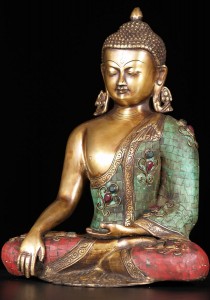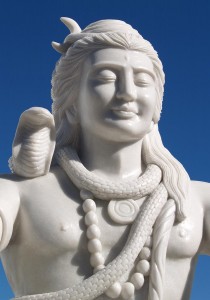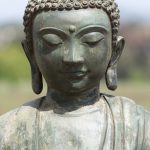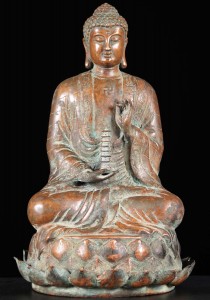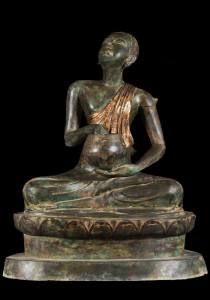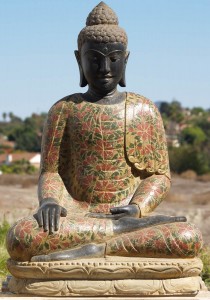
The Buddha brought the world a philosophy in which to navigate the world of suffering. Here is a brief account of the life he led and the experiences that showed him the middle way to the cessation of suffering and samasara.
Birth
Siddhartha Gautama, known as Buddha, the “Awakened,” was the son of Suddhodana, ruler of the Sakhyas, a region lying to the northeast of Oude, in northern India and now this place is inside the border of the Himalayan Kingdom of Nepal. It is believed that Queen Maya, wife of the King Suddhodana, had a dream that a shiny light appeared in the sky, gradually approached her, and melted into her body. The queen filled with joy described the dream to her husband and both of them met a wise man to know the meaning of the dream. The wise man’s words made the king very happy as the man explained that the king is going to have an heir to the throne. The prophecy came true and the queen gave birth to a beautiful son in the Lumbini gardens. All the people experienced great happiness and peace of mind. The joyous parents named the cute little Prince “Siddhartha”, which means “the one who has brought about all good.”
The words of hermit Asita
Asita was a Holy teacher and he came to visit the newborn. He saw many good signs in the child and told the king that if the child chooses to stay with the king, then he will be one of the greatest rulers in history, who will rein a large kingdom and keep the people happy. However, if the child chooses to leave the palace, seeking a way to end all suffering of humanity, then he will attain the greatest knowledge and will become the greatest spiritual leader ever.
Childhood
The queen Maya could not stay long with Siddhartha and she asked her sister to take care of the little prince. The Prince grew up to be a handsome and kindhearted young man. He always loved to remain alone in the garden, when other children of his age group were busy with harsh games. He spent his childhood in Kapilavastu and its vicinity, and was very passionate to all the living beings; even the wild animals were friendly with him. Many instances that took place during his childhood describe the passion, love, and kindheartedness of the prince. The prince was very bright and intelligent in studies but never liked to learn how to rule a kingdom.
Marriage
The king was so happy to know about the intelligence of his son, while sad that the prince was very gentle. Therefore, he along with the minister made a plan and found the perfect match for the Prince. Siddhartha was married to Princess Yasodhara at the age of sixteen.
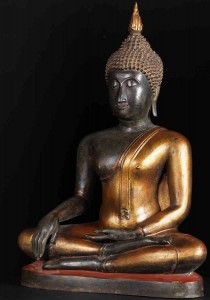
Path of renunciation
Prince Siddhartha was happy with his wife and they were blessed with a son, named Rahula. At the age of twenty-nine, the prince wanted to know more about his people and the world outside his palace gardens. He managed to get out of the palace and roam in the streets, with his servant Channa. The sight of a decrepit old man, a sick man, and a corpse changed the life of the prince and turned him to the path of renunciation. These sights made him leave the palace, wealth, power, father, wife, and his only child to find a way to renounce the world of miseries and sorrows.
Enlightenment
The prince reached Magadha, and met the saints Arada and Udraka and learned from them. He was not satisfied with their teachings and moved to Nairangana River, near the holy town of Gaya. He then began to practice yoga, severe austerities, and Pranayama for several years. He finally tried to attain supreme peace by practicing self-mortification. He sat below the sacred Pipal tree or fig tree at Bodhi Gaya, abstained from all temptations, his mind became calm and relaxed, and by midnight, he attained nirvana. He woke up very happily with a calm and peaceful smile, and his face shone with divine splendor and effulgence. He became the Buddha, meaning the Awakened One. He was also known as Sakhya-Muni.
His Teaching or Dharma
Buddha traveled to different villages and farms of Banaras and wanted to spread the knowledge to all people and relieve all from the sufferings of this worldly life. His teachings were so powerful that regardless of the conditions, caste, creed, or types of men and women, people began to listen to his teaching and found that self-realization is the only way to get supreme peace of mind and happiness. Buddha treated all people as one, without any discrimination for the rich or poor, simple or intelligent, of noble birth or low. His first teaching, known as “Turning the Wheel of the Dharma,” given to five monks, who pleaded for knowledge to Buddha in the Deer Park, at Sarnath around 527 BC. He also revealed the four noble truths of life. People were attracted to him and he used different ways of teaching, which included interesting stories that will appease the children.
King Bimbisara was a disciple of Buddha and always visited Vulture’s Peak, where Buddha and his disciples lived. Buddha returned to his kingdom and by his great teaching converted his father, wife, son, and all his dear ones to his disciples.
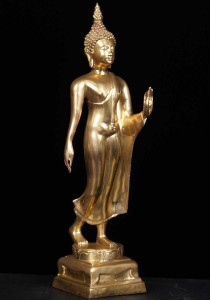
Final Journey
At the age of eighty, Buddha felt that it is time to return to the palace where he grew up. He summoned his faithful Ananda, and started to Kapilavasthu. On the way, Buddha and his disciples passed through the village of Kushinagar. Buddha told Ananda that this is the place where he shall pass away.
Buddha, “the enlightened one,” traveled preaching the Dharma and was successful in saving many people from sacrificing the lives of innocent animals, as a part of their religious customs. Buddha is the founder of Buddhism and his teaching is known to fill with excessive intellectualism and agnosticism. The great historian Edward Arnold referred to the great legend Buddha as the “Light of Asia.”

